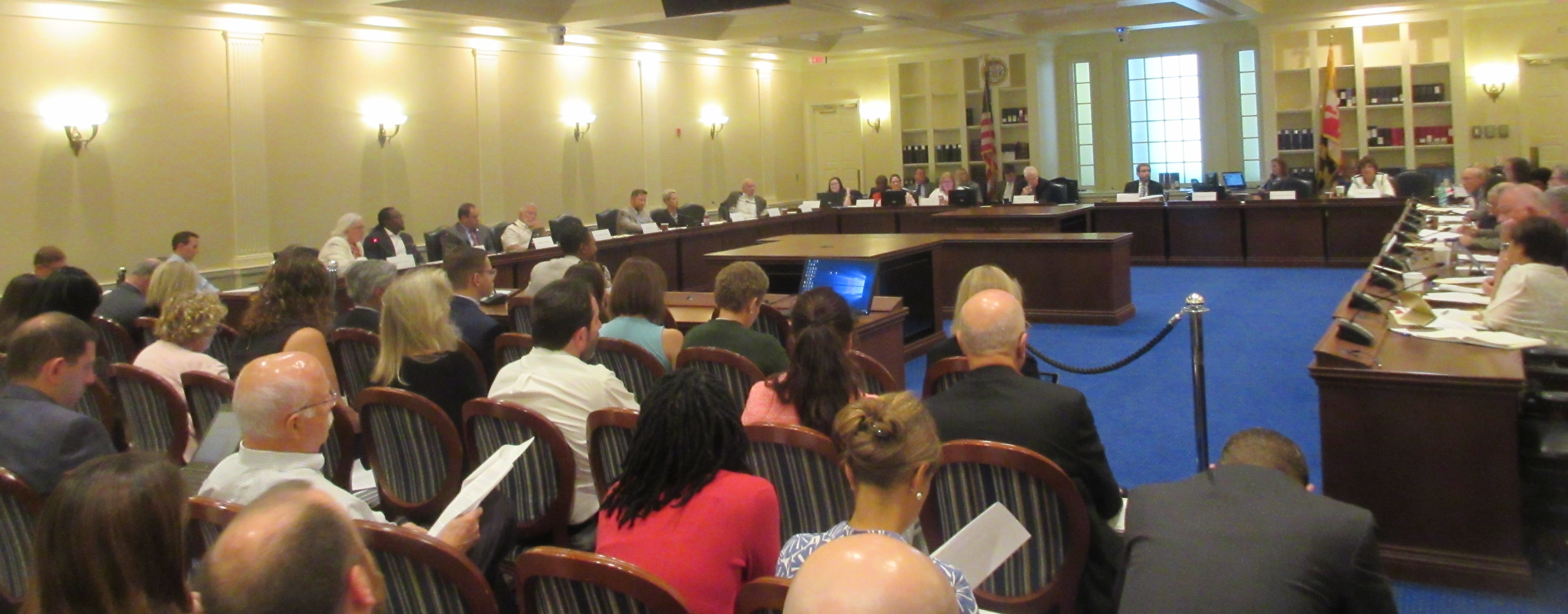By Emily Hooper
Capital News Service
 Gov. Rick Perry has taken a lot of heat for requiring Texas schoolgirls to be vaccinated against human papilloma virus, which causes cervical cancer.
Gov. Rick Perry has taken a lot of heat for requiring Texas schoolgirls to be vaccinated against human papilloma virus, which causes cervical cancer.
Maryland has taken a wait-and-see approach to requiring the shots, with a governor’s task force deciding in 2009 the vaccine was too new to mandate. The public did not know enough about the vaccine and access was too limited, a subcommittee determined.
The issue is particularly acute, given that Baltimore City has 25% more cervical cancer deaths than the national average, according to a report by Maryland Comprehensive Cancer Control Plan.
And other areas in Maryland post higher cervical cancer rates than the nation, which is about 8 out of every 100,000 people. For instance, in Baltimore City, the rate of cervical cancer is 9.8 per 100,000 people. In Cecil County, the incidence rate is 10.7.
The two available vaccines — Gardasil and Cervavix — protect against two strains of HPV that cause about 70% of cervical cancer, the second-leading cause of death for women in the United States.
The Centers for Disease Control and Prevention have recommended that girls be vaccinated at 11 or 12 years old, since the vaccine is most effective before they become sexually active.
The vaccines cannot treat existing HPV infections or related health problems. CDC recommends that a second dose be given one to two months after the first and a third dose six months after the first dose.
“We really shouldn’t see any cervical cancers,” said Dr. Niharika Khanna, associate professor of Family and Community Medicine at the University of Maryland.
Few girls get shots
Despite its benefits, doctors have been disappointed by the vaccine’s low uptake rate, largely due to a lack of access and information. In August, the CDC issued a report that showed only 32 percent of teenage girls received all three shots.
The dismal numbers are a “call to action” to increase awareness about the vaccine and its benefits, said Greg Reed, program manager of the Department of Health and Mental Hygiene Center for Immunizations.
“This is a very, very good vaccine. But there is still misinformation about the vaccine out there,” he said.
The vaccine is caught up in the same debate that tripped up Perry following the GOP presidential debate earlier this month. Perry has been chastised for signing a 2007 executive order requiring female students be vaccinated before entering sixth grade. The requirement was overturned. His Republican presidential opponents have gone on national television to criticize it, with one calling it a “government injection” of a “potentially dangerous drug.”
But the CDC and many physicians have deemed the vaccine safe and effective. Common adverse effects are mild and include pain at the site of injection, fever, dizziness, and nausea and fainting, which is especially common among adolescents.
However, like all vaccines, there are still risks.
In June 2011, the U.S. Vaccine Adverse Event Reporting System released a report on Gardasil side-effects. Eight percent of reported side effects included blood clots and Guillain-Barre Syndrome, a rare neurological disorder that causes muscle weakness. However, the CDC found no evidence that Gardasil had increased the rate of GBS.
HPV sexually transmitted
The controversy has been heightened by the fact that HPV is sexually transmitted, yet the inoculation is recommended before a teen becomes sexually active. Some parents and other critics have charged that the vaccine promotes sexually risky behavior.
“If you’ve had sex you’ve been exposed to HPV,” said Connie Trimble, director of the Cervical Cancer Dysplasia Center and associate professor at Johns Hopkins University.
Maryland has taken a wait-and-see approach to a shot mandate. In 2007, it was one of 24 states and D.C. to introduce legislation to mandate HPV vaccinations for school, but the bill was withdrawn.
In its place, the governor established a task force to make recommendations for a state plan for the vaccine.
In 2009, the HPV subcommittee decided that the vaccine too new to mandate. The public did not know enough about the vaccine and access was too limited.
Problem with chicken pox vaccine
Cathy Allen, former subcommittee member and member of St. Mary’s County Board of Education, worried that a mandate would keep kids out of school, as it did with the chicken pox vaccine.
Beginning in the 2006-2007 school year, the General Assembly required that students be vaccinated for chicken pox or prove they had already been exposed. A year later, some students whose parents had failed to comply were still missing, including more than 2,600 students barred from Prince George’s County schools the following August, according to an article in The Washington Post.
Calls to the Prince George’s County school system were not returned.
“You would be talking about a significant number of children who would have to immediately go out and find a vaccine,” said Reed. “It does take a lot of work and does put tremendous enforcement burden on your schools — both public and private.”
Maryland already requires that students be vaccinated against polio, measles, mumps, rubella, varicella, hepatitis B and Tdap, which protects against diphtheria, tetanus, and pertussis.
Another issue is access. At $390 for a series of three shots, the vaccine is more expensive than most, however, most insurance companies cover the vaccination. Maryland’s Vaccines for Children program provides the vaccine for free to uninsured or underinsured children under 18.
Currently, Maryland’s health department has no plans to recommend mandating the vaccine at this time, said Reed.





Recent Comments